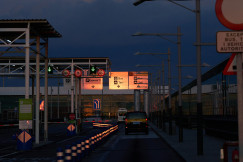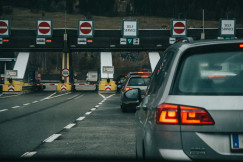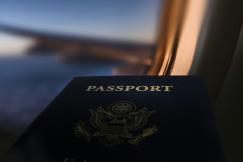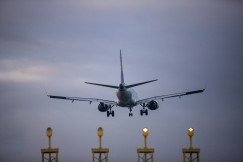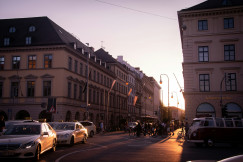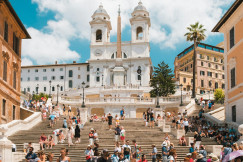Articles
01 July 2025
The Unseen Barriers to Seamless Cross-Border Travel in the EU
Articles
01 July 2025
Adventure tourism
Coastal, maritime and inland water tourism
Cultural tourism
+40 more
Login / create an account to be able to react
-
8

Despite the EU's strong commitment to open borders and the Schengen framework, cross-border travel still faces significant friction due to procedural inconsistencies, administrative hurdles, and fragmented coordination between Member States. True seamless travel involves more than just removing ID checks - it requires harmonised infrastructure, digital systems, visa procedures, and clear communication to ensure a smooth and predictable experience. These hidden barriers not only affect travellers' perceptions but also pose economic risks for the tourism sector, making it essential to align EU policy, local practice, and user expectations to truly realise freedom of movement as a lived, reliable reality.
Topics
Albania
Armenia
Austria
Belgium
Bosnia and Herzegovina
Bulgaria
Croatia
Cyprus
Czechia
Denmark
Estonia
EU-27
Finland
France
Georgia
Germany
Greece
Hungary
Iceland
Ireland
Italy
Kosovo
Latvia
Liechtenstein
Lithuania
Luxembourg
Malta
Moldova
Montenegro
Netherlands
North Macedonia
Norway
Poland
Portugal
Romania
Serbia
Slovakia
Slovenia
Spain
Sweden
Switzerland
Türkiye
Ukraine
Other
Academic / Research and VET Institutions
Business Support Organisation
Company with 250 or more employees
Cluster Organisations
Consumer Organisations
Cultural and Heritage Organisations
Destination Management & Marketing Organisations
EU Institutions
Financial Institutions and Investors
Industry Associations and Chambers of Commerce
International Organisations
Local Authorities
Media / Journalist Organisations
National authorities
Networks and Federations / Confederations
NGOs / Non-profits
Notified Bodies
Regional Authorities
SMEs (a company with less than 250 employees)
Social Economy Entity
Trade Unions
Other
-
Specific types of tourism
-
-
Adventure tourism
-
Coastal, maritime and inland water tourism
-
Cultural tourism
-
Ecotourism
-
Education tourism
-
Festival tourism
-
Gastronomy tourism
-
Health and medical tourism
-
MICE tourism
-
Mountain tourism
-
Religious tourism
-
Rural tourism
-
Sports tourism
-
Urban/city tourism
-
Wellness tourism
-
-
Transition Pathway Strategic Areas
-
-
Coordinated information on travelling
-
Cross-border travelling
-
-
Business activities
-
-
Activities of amusement parks and theme parks
-
Activities of associations and other organisations supporting tourism
-
Air passenger transport
-
Camping grounds, recreational vehicle parks and trailer parks
-
Events catering and other food services
-
Festivals, cultural and entertainment activities
-
Gardens and nature reserves activities
-
Holiday Housing / Apartments and other short stay accommodation
-
Hotel and similar accommodation
-
Mobile beverage services
-
Mobile food services
-
Museums
-
Operation of historical sites
-
Other
-
Other accommodation
-
Other amusement and recreation activities
-
Other food and beverage services
-
Other holiday reservation services
-
Other tourism transportation activities
-
Rail Passenger transport
-
Recreational and sport activities
-
Restaurants, cafes and bars (Food and Beverage serving activities)
-
Road passenger transport
-
Tour operator activities
-
Travel agency activities
-
Water (sea, coastal and inland) passenger transport
-
Share
Free Movement Still Faces Friction
The European Union remains a global benchmark for open borders and coordinated mobility. Yet, for many travellers, especially those navigating multiple Member States, cross-border travel can still feel disjointed. Despite the strength of the Schengen framework, procedural hurdles, inconsistent practices, and fragmented coordination often create invisible borders that impact how visitors experience freedom of movement in everyday life.
This article highlights the less visible barriers - legal, administrative, and perceptual - that can undermine the EU’s efforts at seamless travel. These barriers are not insurmountable, but they do require renewed focus, especially in an era of increasing geopolitical and economic competition.
What 'Seamless' Really Means
Seamless travel is about more than the absence of ID checks. It involves a unified and predictable experience, from visas and customs procedures to infrastructure and digital systems. It means reliable rail links, harmonised road rules, interoperable smart borders, and user-friendly public services at both internal and external frontiers.
But just as critically, seamlessness is about perception. Travelers and tour operators, especially from outside the EU, respond as much to clarity and consistency as they do to official rules. A complicated visa application, unpredictable wait times, or differing border procedures can detract from an entire region’s appeal.
The Procedural Hurdles That Matter Most
Experts and stakeholders repeatedly point to procedural and administrative inconsistencies as a major source of friction. At Schengen’s external borders, procedures vary widely between entry points, with significant differences in wait times, technology, and traveller experience. Even inside the zone, the temporary reintroduction of internal border controls (often a politically motivated decision) can contribute to a sense of fragility. National planning cycles, migration policies, and security concerns often influence decisions on border management, with limited input from tourism operators or regional stakeholders. Smart border technologies and health protocols - vital tools for managing movement - require greater harmonisation to build traveller confidence and operational efficiency.
Visa rules and requirements, particularly for long-haul travellers, remain complex and difficult to navigate. Discrepancies between consulates of the same country can deter travellers, as can the cost of providing biometrics in person. Tour operators and travel agents from Asia or Latin America may pivot to more predictable destinations if uncertainty surrounds the Schengen zone entry process.
Infrastructure: Still a Supporting Role
Infrastructure remains an essential, though no longer central, challenge. While initiatives such as TEN-T and the Connecting Europe Facility have improved many cross-border routes, some gaps remain - particularly in border regions where funding and political coordination can lag. Rail links like Vienna-Ljubljana or Warsaw–Kaunas show what’s possible; others, such as Görlitz-Zgorzelec, remain stalled.
Cycling and walking routes across borders also illustrate both progress and fragmentation. EuroVelo 13, tracing the former Iron Curtain, stands as an example of successful cross-border collaboration. Yet in other areas, mismatched signage, inconsistent maintenance, or missing links still hinder travel on foot or by bike.
Despite strong EU-level strategies, the traveller experience is ultimately shaped on the ground. Administrative barriers, while less visible than fences or checkpoints, are often just as disruptive. Travellers remember not only what happens at the border, but also how long it took to get information, book a ticket, make an appointment to provide biometric information, or receive a visa.
The Stakes for Tourism
Despite strong EU-level strategies, the traveller experience is ultimately shaped on the ground. Administrative barriers, while less visible than fences or checkpoints, are often just as disruptive. Travellers remember not only what happens at the border, but also how long it took to get information, book a ticket, or receive a visa. These friction points carry direct economic implications for the tourism sector. Uncertainty, delay, or confusion can divert tourist flows and affect Europe's positioning as a preferred destination, and travellers who have positive experiences elsewhere are more likely to then recommend that destination, leading to a compounding geometric loss of tourism. Visa facilitation and seamless travel are investments rather than costs; in a competitive global travel market, seamlessness is a value proposition
Luxury and business travellers in particular prioritise smooth transitions, predictable procedures, and consistent standards. If a journey involves unexpected stops, delays, or last-minute checks, it risks damaging Europe’s reputation as a connected and visitor-friendly space. There is also scope for value-adding; if travellers can pay for a seamless experience which minimises time spent on administrative matters and maximises perceived service levels, they will, which is reflected, for example, in the demand for fast-track options. Crucially, however, the availability of premium options should not detract from the importance of ensuring that standard service is also high-quality.
It is worth noting that the current Royal Decree in Spain imposes unusual obligations on suppliers, requiring them to report client data to government authorities. This is creating cross-border complications within supply chains and, regardless of compliance with the EU’s GDPR, represents yet another instance of unilateral action by a Member State that risks undermining the perception of the EU single market as a coherent and harmonised system.
Next Steps: Aligning Policy, Practice, and Perception
Delivering true seamlessness will require more than new funding or regulations. It demands deeper coordination between EU institutions, Member States, and local actors. Institutional players like DG MOVE and DG HOME must work more closely with regional authorities, tourism bodies, and the private sector to compare insights and ensure smoother implementation.
Digital tools such as ETIAS and EES are promising, but their success depends on user experience and interoperability. Health protocols and emergency coordination, lessons from the COVID-19 period, remain relevant for ensuring travel continuity in times of crisis.
Freedom of Movement as a Lived Reality
The EU has the ambition and many of the tools it needs. The next challenge is to make the experience of seamless travel a lived reality for all - citizens, visitors, and businesses alike. That means turning legal frameworks into operational clarity, and infrastructure into predictable, high-quality service.
While the political and social symbolism of borders remains critically important, increasingly cross-border travel is less about geography and more about experience. If Europe wants to maintain its edge as a global tourism leader and a champion of mobility, it must ensure that freedom of movement is felt at every step of the journey.
Comments (0)
Related content
See also
-
53
Workshop resources "Unbalanced Rollercoaster: EU Tourism tools for a Smoother Ride"
- Categories
- Coastal, maritime and inland water tourism Cultural tourism Ecotourism +64 more
-
19
Help shape the EU Sustainable Tourism Strategy
- Categories
- Coastal, maritime and inland water tourism Cultural tourism Ecotourism +64 more
-
263
Unbalanced Tourism Growth in Europe: Understanding Pressures, Impacts and Sustainable Pathways
- Categories
- Coastal, maritime and inland water tourism Cultural tourism Ecotourism +64 more


